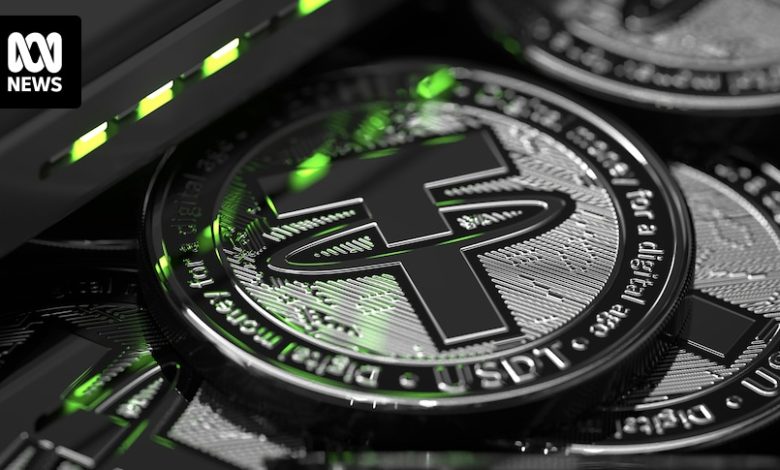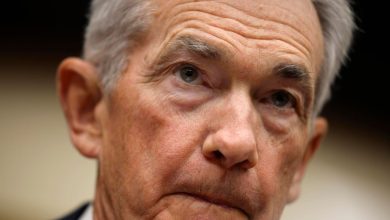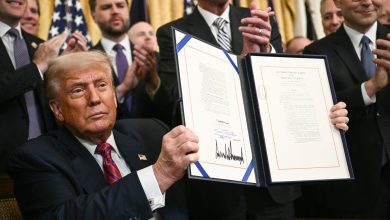What’s behind Donald Trump’s latest crypto adventure?

Amid all the noise about Epstein and ankles late last week, Donald Trump quietly started a revolution within the global monetary and payments system.
The announcement didn’t go entirely unnoticed, but with the anger and fury bubbling through American society right now, it didn’t quite get the exposure it deserved.
It’s called the “Guiding and Establishing National Innovation for US Stablecoins Act”, an innocuous-sounding bill that condenses down into a neat little acronym.
“The GENIUS Act, they named it after me,” Trump announced in a rare moment of levity and without the faintest hint of irony.
Donald Trump has signed the “Guiding and Establishing National Innovation for US Stablecoins Act” or “GENIUS Act”, providing the regulation of payment stablecoins. (Reuters: Jonathan Ernst)
Widely touted as a means to provide credibility for the crypto industry, and the US president’s family business exposures, the move will have far-reaching impacts on the global financial system and the US economy.
Most of the attention in the lead up to the bill’s passing has focused on the president’s personal exposure to cryptocurrencies. And for good reason.
Five years ago, towards the end of his first term in office, Trump denounced Bitcoin and cryptocurrencies as “a scam”.
But in the lead up to last year’s election, he announced a lighter touch to crypto regulation.
New regulators with a more benign attitude to the industry would replace those who brought the likes of Sam Bankman-Fried — the FTX tycoon now serving a 25-year jail sentence — to justice after one of the biggest financial collapses in history.
That pledge saw huge amounts of donations flow in from crypto industry devotees.
And, in the aftermath of the election, the president and his wife launched their own meme coins — raising an estimated $US2.7 billion — along with the launch of World Liberty Financial, a cryptocurrency firm run by his sons and other business associates.
While the potential conflicts of interest are disturbing, the bill could reshape the way global finance and trade flows operate.
Not so stable
Stablecoins haven’t always lived up to their name. Occasionally, they’ve been anything but.
When the cryptocurrency industry was collapsing in on itself three years ago, a stablecoin called UST — which had little real asset backing — suddenly was de-pegged from the US dollar, resulting in the collapse of two big cryptocurrencies, Terra and Luna.
Investors lost tens of billions of US dollars.
Investors lost tens of billions of US dollars when cryptocurrencies Terra and Luna collapsed. (Reuters: Dado Ruvic)
But the concept has survived and stablecoins, unlike many other crypto applications, have a useful purpose. They can transfer money in an instant and at minimal cost with none of those annoying transfer fees.
Stablecoins are named as such because they are pegged to a fiat currency, usually the US dollar. Unlike other cryptocurrencies like Bitcoin, the price doesn’t change or, at least, shouldn’t.
To be truly stable, however, they must be backed by assets that can be readily exchanged into US dollars, assets like US Treasury bills and US government bonds, essentially US government debt.
For years, they were mostly used in countries with unstable currencies like Turkey. But that’s now changing.
During the past year, stablecoin transactions have exceeded $US33 trillion, far exceeding that of PayPal and even Visa, a trend that is in its infancy.
That sudden lift in transactions and the rise of stablecoins has begun to shift the market for US government debt.
Loading…
Tether, the biggest stablecoin, last year emerged as the seventh biggest buyer of US Treasuries and between them, stablecoins now collectively hold $US128 billion in US Treasuries, which is more than sovereign holders like Germany, Saudi Arabia, and South Korea.
This shift is occurring at the same time as the US dollar is losing its lustre and questions are being raised about America’s role as the global reserve currency.
While there is no obvious interloper, another currency to take its place as the global reserve, confidence in America is faltering, as this graph shows, hit by rising levels of US debt and increasingly erratic politics.
Confidence in America is dropping, hit by rising levels of US debt and increasingly erratic politics. (International Monetary Fund)
China, once the world’s biggest owner of US Treasuries and bonds, has been selling down US government debt, and instead building its store of gold.
That has kept US Treasury officials awake at night. Less demand for US government debt flows directly through to higher interest rates. That’s because investors would demand higher yields, or interest rates, to purchase the bonds for the greater risk they hold.
With the interest bill on its $US37 trillion debt already topping $US1 trillion a year, that’s something the US can ill-afford.
Can America stem the outflow of cash?
US Treasury Secretary Scott Bessent is praying that he’s found the answer.
Just as foreign governments and their central banks have been backing out of US dollars and US government debt, stablecoins may just fill the breach.
US Treasury Secretary Scott Bessent is hoping stablecoin demand for American government debt will pull borrowing costs lower. (ABC News: Bradley McLennan)
Continued demand for US government debt is vital for America’s future, something Bessent’s boss, Donald Trump, has failed to grasp.
The US president believes the rest of the world is “ripping us off” because the US runs a trade deficit. The real problem is that Americans spend more than they save.
And the only way to finance that, is to ensure there is strong demand for US government debt.
Bessent is hoping stablecoin demand for American government debt will pull borrowing costs lower. He has some serious heft backing him on that. Investment banks Citigroup and Standard Chartered both believe that stablecoin use will grow exponentially within the next few years.
Even major US retail chains and banks have begun exploring stablecoins to drive down the excessive fees charged by credit card companies.
That sounds like an easy fix for the Treasury Secretary. But as The Economist newspaper points out, if the money is merely being switched from one set of domestic buyers to another, the pain relief will be short-lived.
It also points out that, should the world become hooked on stablecoin use, foreign demand to back US dollar stablecoins will also lift demand for US dollars.
That, in turn, will push the US dollar higher, thereby giving Americans more buying power for their imported goods.
That would undermine any efforts from Trump to tariff his way to a trade surplus.
A few winners
For all the optimism that blockchain technology finally may deliver some useful applications, questions remain.
While Circle — another stablecoin and smaller rival to Tether — is independently audited, its bigger competitor is not.
It doesn’t disclose where its reserves are held or exactly what they comprise and particularly whether it holds volatile assets such as Bitcoin that may undermine its ability to balance its liabilities.
Loading
To date, it has weathered some almighty crypto storms. But should it falter, it would seriously damage the credibility of the emerging industry and derail any solution, however short-term, that Scott Bessent may hold in store for US government debt demand.
The shift in sentiment towards cryptocurrencies, particularly since Donald Trump surged to power earlier this year, has been nothing short of spectacular.
Bitcoin is trading at records and most keen watchers expect it to keep rising.
It is estimated the president reaped $US320 million from sales of one of his meme coins, while a foreign government wealth fund invested $US2 billion in another. A third has sold at least $550 million in tokens.
But not everyone is a winner in the crypto sphere.
Those who invested in $Trump, the president’s meme coin, and his wife’s coin $Melania, have suffered massive losses ever since the Inauguration Day spike.




